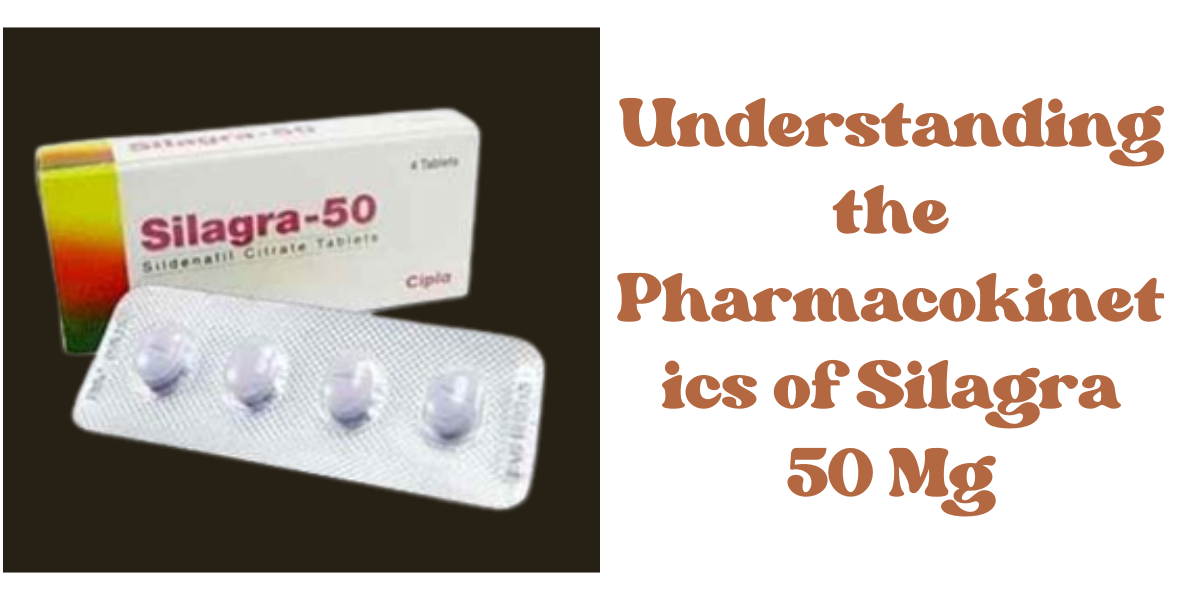Erectile dysfunction (ED) is a prevalent condition affecting millions of men worldwide, impacting not only physical health but also psychological well-being and intimate relationships. Among the various treatments available, Silagra 50 Mg has emerged as a reliable option. This article delves into the pharmacokinetics of Silagra 50 Mg, providing a comprehensive understanding of how this medication works within the body.
What is Silagra 50 Mg?
Silagra 50 Mg is a medication primarily used to treat erectile dysfunction. It contains Sildenafil Citrate as its active ingredient, which is also found in the well-known brand Viagra. Manufactured by Cipla, a prominent pharmaceutical company, Silagra 50 Mg offers a cost-effective alternative for men seeking relief from ED. The drug works by enhancing blood flow to the penis, helping to achieve and maintain an erection suitable for sexual activity.
How Silagra 50 Mg Works
The mechanism of action of Silagra 50 Mg revolves around its ability to inhibit the enzyme phosphodiesterase type 5 (PDE5). During sexual arousal, nitric oxide is released in the erectile tissue of the penis, stimulating the production of cyclic guanosine monophosphate (cGMP). This molecule relaxes smooth muscle cells, allowing increased blood flow into the penile tissues, leading to an erection. PDE5 breaks down cGMP, and by inhibiting this enzyme, Silagra 50 Mg ensures that cGMP levels remain elevated, thus sustaining the erection.
Typically, Silagra 50 Mg begins to work within 30 to 60 minutes after ingestion, with its effects lasting for up to four hours. It is crucial to note that sexual stimulation is necessary for Silagra to be effective.
Absorption and Distribution
After oral administration, Silagra 50 Mg is absorbed rapidly through the gastrointestinal tract. Peak plasma concentrations are usually reached within 30 to 120 minutes. The bioavailability of Silagra 50 Mg is about 40%, meaning that this proportion of the drug reaches the systemic circulation.
Food intake, particularly high-fat meals, can delay the absorption of Silagra, reducing its effectiveness. Hence, it is recommended to take the medication on an empty stomach for optimal results.
Once absorbed, Sildenafil is distributed widely throughout the body. It binds approximately 96% to plasma proteins, which helps in its extensive distribution.
Metabolism
Silagra 50 Mg undergoes hepatic metabolism, primarily through the cytochrome P450 enzymes CYP3A4 and CYP2C9. The drug is metabolized into several metabolites, the most significant being N-desmethylsildenafil, which retains some pharmacological activity. The metabolic process ensures that the drug is broken down and eventually prepared for excretion.
Elimination
The elimination of Silagra 50 Mg occurs through both renal and fecal pathways. Approximately 80% of the administered dose is excreted as metabolites in the feces, while the remaining 13% is excreted in the urine. The terminal half-life of Silagra is about four hours, which aligns with the duration of its therapeutic effects.
Drug clearance is a critical concept, referring to the body's ability to eliminate the drug. For Silagra 50 Mg, clearance ensures that the drug does not accumulate to toxic levels with regular use, maintaining safety and efficacy.
Factors Influencing Pharmacokinetics
Several factors can influence the pharmacokinetics of Silagra 50 Mg, including age, health conditions, and drug interactions. For instance, older adults may experience a slower metabolism, necessitating dosage adjustments to avoid adverse effects. Patients with liver or kidney impairments also require careful monitoring and potential dosage modifications.
Drug interactions are another crucial consideration. Medications such as nitrates, used for chest pain, can cause a severe drop in blood pressure when taken with Silagra. Similarly, other medications that affect the cytochrome P450 system can alter the metabolism of Silagra, impacting its efficacy and safety.
Clinical Implications
Understanding the pharmacokinetics of Silagra 50mg has significant clinical implications. It aids healthcare providers in determining appropriate dosages, ensuring that the medication is both safe and effective for each individual. Knowledge of factors that influence the drug's behavior in the body helps in anticipating potential interactions and adjusting treatment plans accordingly.
Educating patients on how to take Silagra 50 Mg is equally important. Patients should be advised to take the medication as prescribed, avoid high-fat meals before ingestion, and be aware of potential interactions with other drugs they may be taking. This education enhances adherence to treatment and maximizes the therapeutic benefits.
Conclusion
Silagra 50 Mg offers a viable solution for men dealing with erectile dysfunction. By understanding its pharmacokinetics, patients and healthcare providers can ensure its safe and effective use. From absorption and distribution to metabolism and elimination, each step in the pharmacokinetic profile of Silagra 50 Mg plays a crucial role in its overall efficacy. Always consult with healthcare professionals for personalized advice and treatment plans tailored to individual needs.





Comments